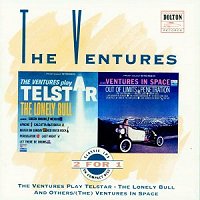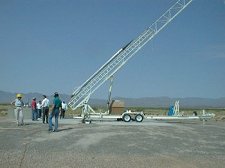|
These very low cost sounding rockets can in
turn provide launches for microgravity experiments developed
by other students not involved in the rocket project.
The success of this progam inspired a group
at the Marshall Spaceflight Center to begin its Student
Launch Initiative. This program brings high powered rocketry
projects to local high schools and colleges in the Huntsville
Alabama area.
Stellar
Access for High Schoolers
Most US students grow up in heavily light-polluted
urban or suburban areas and have never seen the vast canopy
of brilliant stars and planets above them, much less examined
any of them with a powerful telescope.
To attack this impoverishment, a group of
high school students developed the Student
Telescope Network. This project, supported by the Youth
Activities Committee (YouthInAstronomy.org) of the Astronomical
League, was developed to
"...enable high school students interested
in astronomical observing, to access a telescope with digital
camera in a remote dark location via the internet, and to
pursue basic observational research."
The article Student
behind global telescope network - CNN.com - Apr.13.02
describes how Ryan Hannahoe and other high school students
developed this system to provide high school students around
the world access to a high powered telescope in an area with
little light pollution (see the New
Mexico Skies observatories).
(See the Robotic
Telescope section for more about these facilities
that are accessible to both students and amateur astronomers.)
We can hope that these rocketry, astronomy
and other exciting student projects will entice more students
into science and engineering. (See the Space
Education section for more
Space
Music
Preview
the Space CD
The National
Space Society sponsored a space song contest in 1998. A CD
called Ad
Astra with the top placing songs and other space inspired
music will be released later this year by Prometheus
Music.
You can now listen to some of
the songs on the CD at MP3.com
- National Space Society CD. Also, some works-in-progress
versions can be streamed from the NSS
CD page at Prometheus.
A sampler CD of the disk was
sent to people throwing Yuri's
Night parties and this editor was also lucky enough to
get one. (Many thanks goes to Eli Goldberg of Prometheus Music.)
I'm very impressed by
the songs. Some of them could be chart toppers if they ever
reached a wide enough audience. Ranging from rock to Celtic
in style, the collection celebrates space exploration with
thoughtful as well as darn danceable tunes.
Venture-ing
into Space

The Ventures Play Telstar +
Ventures
in Space
Amazon
: US
UK
(HobbySpace commission links)
The rock instrumental group The
Ventures were hugely successful during the 1960's
and continues playing today. (They've sold over 90 million
albums.) The band's unique multiple-guitar sound took the
California surf rock
style around the world.
One of the bands earliest successes
was their cover of Telstar
just as the version by the Tornados reached the top of the
charts.
The Ventures Play Telstar album became
one of their biggest sellers; so much so that many Americans
came to assume that the song was originated by the Ventures.
(Note that Leon Russell, who attained solo fame in the 1970's,
played the keyboards on Telstar.)
The Ventures in Space album was not quite as successful
but is considered their most influential work. They created
exotic "spacy" sounds on their guitars that rivaled
those from synthesizers. Many musicians of the psychedelic
and classic 60's rock era claimed the album as an inspiration.
Keith Moon, for example, the drummer for the Who, called
it his favorite album.
See the review Ventures
in Space posted recently at SurfRockMusic.com.
|




